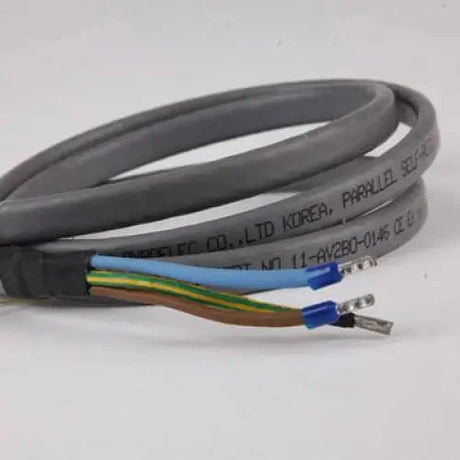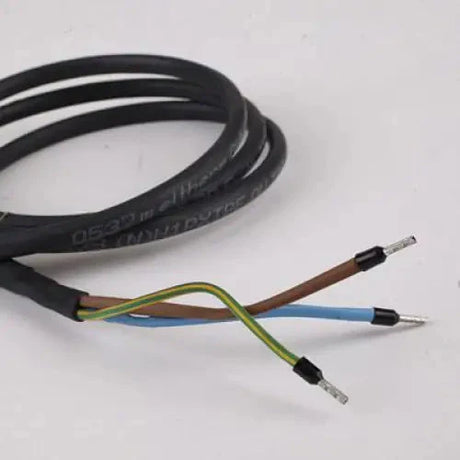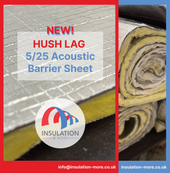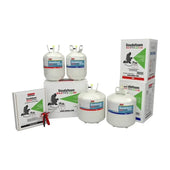When it comes to safeguarding our homes and buildings against the relentless assault of Mother Nature's elements, waterproof sealants are unsung heroes. But what precisely are these stalwart defenders? Waterproof sealants are a specialised kind of adhesive concoction, employed to block the passage of fluids through material surfaces, joints or openings. They're quite simply the barricade that keeps water at bay.
Why, though, do they deserve more than a passing nod? For starters, water damage is a real party crasher. It ruins the structural integrity of buildings, moulders away at interiors, and could lead to costly repairs. Waterproof sealants are the invisible shield that protect your abode from these wet woes.
Types of Waterproof Sealants
Venture into the world of waterproof sealants, and you'll find it as varied as the fish in the sea. Let's dip our toes into the most common types, shall we?
Silicone-based sealants
Properties
Silicone-based sealants are like the Swiss Army knife of sealants: versatile, resilient, and they can withstand a lot of what nature throws at them. They're elastic, can stand up to UV rays without turning to toast, and they laugh in the face of extreme temperatures.
Applications
You'll spot them cosying up in bathrooms and kitchens, where water constantly tries to seep through nooks and crannies. They're also the go-to for sealing windows and doors, ensuring the great British rain stays outside, where it belongs.
Polyurethane sealants
Characteristics
Polyurethane sealants boast toughness and flexibility, making them the hardy contenders in the realm of sealants. They're adhesive champs and can form a mighty bond with a variety of materials.
Uses
A common sight on construction sites, polyurethane sealants are deployed for outdoor applications that demand a sealant with a little more muscle, like in building envelopes or bonding dissimilar materials.
Acrylic sealants
Features
Acrylic sealants are the budget-friendly option for those not looking to break the bank. They offer decent protection against water ingress and are paint-friendly, which is always a plus.
Common applications
Acrylic sealants are often found indoors, lending their abilities to sealing up cracks and gaps in walls and ceilings, ensuring drafts and damp don't overstay their welcome.
Butyl rubber sealants
Advantages
Butyl rubber sealants are like that one friend who's always ready for anything. They're robust, with great adhesion, and they're particularly nifty at absorbing sound and vibrations.
Typical uses
You'll find butyl rubber sealants being used for sealing joints in foundations, roofing, and cladding systems. They're tough cookies that don't crumble under pressure.
Factors to Consider When Choosing Waterproof Sealants
Picking the right waterproof sealant isn't a decision to take lightly. It's a bit like choosing a tea – the options are endless, and the wrong choice can lead to a less than stellar experience.
Environmental conditions
Impact of temperature and humidity
Let's talk about the weather, shall we? If sealants were people, they'd be Brits, constantly talking about the weather. Temperature swings and humidity levels can be quite the adversaries, so you need a sealant that can handle the highs and lows without throwing a fit.
Surface materials
Compatibility with different surfaces
The best of friends are always compatible, and the same goes for sealants and surfaces. You wouldn't want your sealant to recoil in horror upon meeting its surface mate. Ensure they're a match made in heaven.
Application method
Ease of application
Not all of us are Michelangelo with a caulking gun. Some sealants are a breeze to apply, while others might test your patience (and your sanity). Choose wisely, or you might end up with more sealant on you than on the job!
Longevity
Durability and lifespan
A sealant with the longevity of the Queen's reign is what you're after. It should be in it for the long haul, bravely facing the elements year after year.
Benefits of Using Waterproof Sealants
Now, let's wax lyrical about the benefits of waterproof sealants, because there's more to them than just keeping you dry.
Protection against water damage
Water damage is like that uninvited guest who ruins the party. Waterproof sealants are the bouncers that keep this damp intruder out.
Preventing leaks and moisture intrusion
Leaks are sneaky little blighters. A dab of sealant here and there, and you can bid adieu to unexpected indoor showers.
Improving energy efficiency
Did you know that sealants can help keep your energy bills down? It's true! By sealing up gaps, you're not just keeping water out, you're keeping heat in.
Enhancing structural integrity
Waterproof sealants are like the spinach to Popeye – they give strength. By preventing water ingress, they help maintain the structural backbone of your abode.
Preparation and Application
Like a good cuppa, preparation is key. A sealant's effectiveness is only as good as the surface it's applied to and the care with which it's handled.
Surface preparation
Cleaning and priming
You wouldn't paint over a dirty wall, and the same goes for applying sealant. A clean, primed surface means your sealant can perform at its peak.
Application techniques
Caulking
Caulking is the art of sealant application. It's not just about squeezing the trigger; it's about finesse, ensuring a smooth, even bead that'll do its job right.
Spraying
For large areas or tricky spots, spraying can be your best mate. It's quick, even, and can get into those hard-to-reach places.
Troweling
Sometimes you need to get hands-on, and that's where troweling comes in. It's perfect for those heavy-duty applications that need a bit more elbow grease.
Safety precautions
Handling and ventilation
Remember, safety first! Proper handling and adequate ventilation are crucial when dealing with chemicals. Don't skimp on the safety gear – your health will thank you.
Maintenance and Care
Like the Crown Jewels, waterproof sealants need a bit of looking after to maintain their lustre.
Inspection
Periodic checks
An occasional check-up can nip potential problems in the bud. Keep an eye on your sealant, and it'll serve you well for years to come.
Repairing sealant damage
Removal and reapplication
Even the best sealants can suffer a battle wound. When they do, it's time to remove and reapply. A fresh coat can restore the sealant's former glory.
Cleaning
Proper cleaning methods
A clean sealant is a happy sealant. Use the right cleaners and techniques, and you'll avoid damaging its waterproofing prowess.
Common Applications
When it comes to where waterproof sealants can make a splash, the list is long and varied.
Exterior sealing
Windows and doors
These are the usual suspects for water ingress. A good sealant ensures that the only drafts you feel are the ones you want from your air conditioning.
Roofing and gutters
It's raining cats and dogs, but inside, it's as dry as a bone thanks to the diligent application of sealant on the roof and gutters.
Interior applications
Bathrooms and kitchens
The battle against moisture is most fierce here. Sealants stand guard against the relentless barrage of water and steam.
Flooring and tiling
Floors and tiles can act like sponges if not sealed properly. A waterproof sealant ensures your floors stay as dry as a desert.
Challenges and Limitations
Even the mightiest heroes have their kryptonite, and sealants are no exception.
Adhesion issues
Substrate compatibility
Not all materials are best friends with sealants. Some are like oil and water – they just don't mix. Ensure compatibility to avoid a sticky situation.
UV resistance
Exposure to sunlight
The sun's rays can be harsh, bleaching and weakening a sealant over time. Choose a UV-resistant type if you want it to stand the test of time.
Joint movement
Dealing with expansion and contraction
Buildings breathe and move, and sealants need to tango along. They must be flexible enough to accommodate these subtle shifts.
Product Selection and Comparison
Choosing the right sealant is a bit like picking the right hat for the British weather – it needs to be just right.
Brand comparison
Top manufacturers
Not all brands are created equal. Some have built a reputation stronger than their sealants, while others may leave you high and dry.
Product features
Strengths and weaknesses
Each sealant has its own superpower and Achilles heel. Weigh them up against your needs to find your perfect match.
Customer reviews
User experiences and feedback
Don't just take the manufacturer's word for it. Customer reviews can reveal the real-world champions of waterproof sealants.
Regulations and Standards
In the construction world, rules and regulations are the tea-time of the industry – necessary and to be observed diligently.
Building codes
Compliance requirements
Adhering to building codes isn't just a good idea; it's the law. Make sure your sealant choices are up to code, or you could be in for a soggy surprise.
Environmental impact
Eco-friendly options
The planet's health should be on your checklist. Eco-friendly sealants can do the job without leaving a heavy footprint.
Health and safety guidelines
Occupational exposure limits
When applying sealants, remember you're not just building a home; you're also looking after your well-being. Stick to health and safety guidelines like a sealant to a bathtub.
Cost Considerations
The issue of cost is always a sticky point, much like choosing between the costly waterproof boots or the cheaper ones that might let in the wet.
Initial investment
Purchase cost
The price tag on a sealant can range from pocket change to a mini fortune. But remember, the sting of poor quality may last longer than the joy of a low price.
Long-term savings
Benefits of using quality sealants
Investing in a quality sealant could save you a bundle down the line. A stitch in time saves nine, and a good sealant saves a whole lot more.
Return on investment
Cost-effectiveness over time
Think of your sealant as an investment. It's not just about the upfront cost; it's about how much it'll save you in repairs and energy bills in the long run.
Conclusion
In conclusion, the world of waterproof sealants is as deep and varied as the ocean. From silicone to polyurethane, acrylic to butyl rubber, there's a sealant for every nook and cranny, crevice and gap. Consider the environmental conditions, surface materials, and application methods before making your choice, and don't forget about the ongoing maintenance and care.
Waterproof sealants not only protect against water damage but also bolster energy efficiency and structural integrity. Be mindful of the challenges and limitations, such as adhesion issues, UV resistance, and joint movement. When selecting a product, compare brands, assess features, and heed customer reviews to ensure you're getting the best bang for your buck.
Remember, compliance with regulations and standards is non-negotiable, and while cost considerations are important, they should be weighed against long-term benefits and return on investment.
The importance of proper sealant selection and application cannot be overstated – it's the difference between a fortress and a house of cards. And with future developments in waterproof sealant technology, we can only expect our fortresses to become even more impervious to water's relentless siege.























































